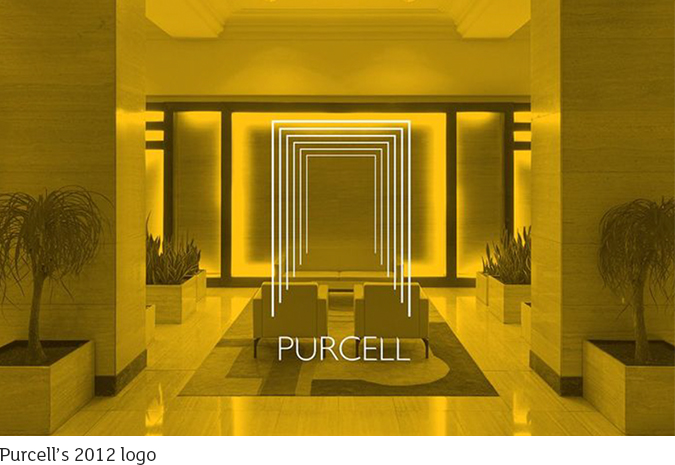-

You’re more than just a business… you’re a brand
7 June 2016Brand identity was a phrase much bandied about during the boom, as businesses and products competed to stand out in crowded markets. But the benefits of a defined persona, with clearly stated principles and aspirations, have weathered the change in economic fortunes, and infiltrated the architectural profession. The payoffs might be greater than you think.
Why do architectural practices benefit from a brand identity?
Many architectural practices rely on their name to express their identity. The problem with this is that they all end up looking the same. Imagine if that were true of buildings.
Having rebranded and worked with a number of practices over the years, some architects can be suspicious of it, especially when they’re known for their buildings. But effective branding gives audiences a better understanding.
So why have a brand identity? Why does it matter?
Potential clients might be familiar with what sort of architecture you provide, but they don’t necessarily know what the journey would be like. An identity is going to support your architectural approach, but further than that, it reflects an attitude and a way of working that speaks volumes about the sort of practice you are. It’s also important that your staff and new joiners understand the culture of the practice, what’s expected of them and what life will be like for them.
There are a number of reasons to refresh brand identity. It might be that the practice has fundamentally changed in some way, perhaps it is operating in new areas, there has been a merger or name change. Or maybe it’s simply that the existing branding is just a bit old and tired.
What are the benefits to the practice?
There are five fundamental reasons for getting a brand identity. First, it helps build your reputation: you operate in a very competitive marketplace. You want to be chosen to do the projects you want to do. An effective brand identity will help bring clarity and understanding to your audiences.
Secondly, you may be pigeonholed for a style of architecture that isn’t what you want to do. Branding can help change perceptions. In turn, this can help your business to grow. Our recent rebrand of Purcell delivered a 29.5% increase in turnover over the first two years since its launch (see below).
Branding can also facilitate business decisions. The process of creating an identity provides you with a clear brand strategy which feeds into your business plan, helping you determine the future of the company.
Finally, it is a useful way of uniting staff within the company. It is key for employees to understand the practice they are working for or wish to work for. The behaviours and actions of your team are critical to your success, so they must buy into your ethos.
What exactly is a brand identity?
Essentially, branding is a way of distinguishing a product or service. If you think of its origins, branding cattle identified ownership. A successful brand identity will create coherence, consistency and distinctiveness. It will tell your story clearly, in your own way, while consistency brings brand recognition, which is obviously a valuable asset. In a competitive marketplace it is key to stand out from the crowd – appropriately. No two practices are alike, so don’t look or sound like anyone else.
How do you create a brand identity?
A brand identity must be created following an objective process. It starts with the formulation of a strategy, at the heart of which is a core proposition. This is the ‘big idea’– just a few words that describe the essence of a practice. This is the flag you want staff to rally around. It is also the springboard for creating your brand identity. Supporting the core proposition is the practice’s vision, values, offer, positioning and personality.
The best way to formulate all of this is to run a workshop. This would typically be facilitated by a design agency. They are skilled in the clever ways to open up participants’ minds and to avoid them thinking too literally. In addition, for larger practices it’s worth considering a simple staff survey. This not only involves everyone but makes them feel part of the process, which is valuable for the new identity to be embraced. Talking to some key clients, current or lapsed, can be helpful too, as you might learn things about yourselves that you didn’t know (whether good or bad, this is useful).
With a strategy in place, a creative brief can be created. This brief becomes the benchmark against which the creative concepts are measured. This keeps the process focused and objective. The next stage would be to create the visual identity itself. The core elements (logo, typefaces, colours, tone of voice and imagery) combine to create a visual language that is distinct and bespoke. You may need to dial up or down the tone of communications to suit different audience types and we do this by controlling certain core elements that are ‘locked’ and others that are flexible, thereby achieving the combination of consistency with flexibility.
Successful branding is proven to work. The DBA Design Effectiveness Awards are testament to this. Ask Purcell.
Read more...
-

You’re more than just a business… you’re a brand
7 June 2016Brand identity was a phrase much bandied about during the boom, as businesses and products competed to stand out in crowded markets. But the benefits of a defined persona, with clearly stated principles and aspirations, have weathered the change in economic fortunes, and infiltrated the architectural profession. The payoffs might be greater than you think.
Read more...